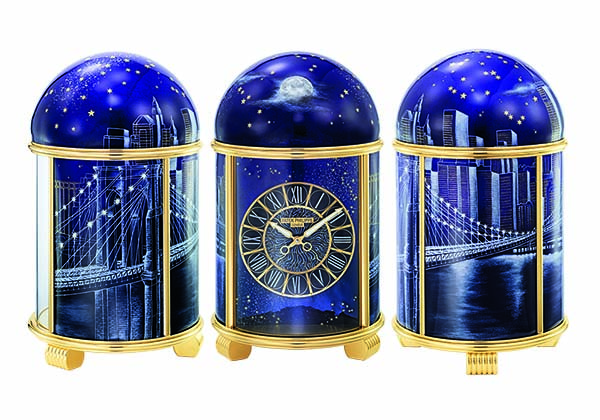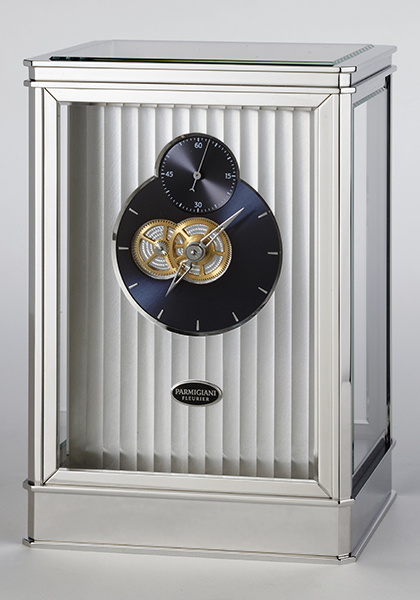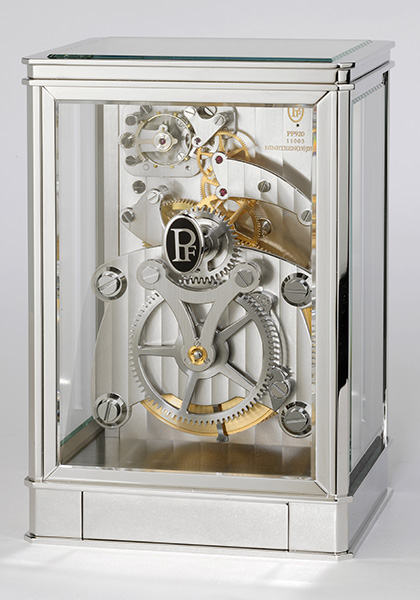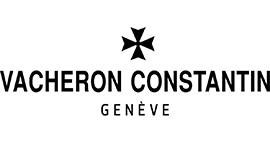Watchmakers, designers and movement constructors have to work with dimensions at which the naked eye reaches its limits. Although a watch dial may be eminently visible, some of the components in the movement powering the display may be little more than the thickness of a human hair, and in some cases even thinner than that. So what happens when watch brands turn their attention to table clocks? Is it just a question of making everything bigger? Far from it! Watches and table clocks are two completely separate products, designed for separate uses and at separate scales. But some watch brands have developed expertise that allows them to excel even at this altogether different scale.
Patek Philippe is famous for its domed table clocks, which have been produced in limited series in recent years to coincide with the huge exhibitions that the company has organised around the world. In terms of image, these clocks are more about showing off the company’s mastery of artistic crafts rather than precision timekeeping. The clock face is a relatively modest display that is not much bigger than that of a Patek Philippe wrist watch, but the rest of the dome structure is devoted to showing off a whole variety of artistic crafts.
For the Grand Exhibition in New York in 2017 Patek Philippe presented themed models using cloisonné enamel with a mixture of transparent, opaque and opalescent enamel paints. Each design depicts a traditional American scene, from the “Gold Seekers” panning for gold to the “Brooklyn Bridge” featuring grisaille enamel and Limoges white, and the “Baseball” clock featuring vintage baseball card designs with the portraits of famous players.

Vacheron Constantin has opted for an historical inspiration for its Arca collection of table clocks. Its clear Art Deco design harks back to clocks with Asian motifs produced by the Geneva brand during the Art Deco period and inspired by an exhibition in Paris that, for many of the artists, was a first glimpse of this kind of art. These inspirational models were recently on display at an exhibition at the Vacheron Constantin store in Geneva. The Arca collection consists of 12 unique pieces, each with a cabinet in a typical Art Deco arch design that is hewn from solid blocks of rock crystal. Inside is the 9260 calibre manual-winding movement that has been specifically arranged vertically to fit with the Art Deco style and offers a 30-day power reserve as well as a constant-force mechanism.

In the case of Parmigiani Fleurier, it can be difficult to decide which side of the clock you would rather look at. From the front, one has the impression of an oversized dial from one of the brand’s wristwatches, surrounded by a frame of thick bands of Côtes de Genève that recall a movement finish. From the sides and back, however, through facetted mineral glass, you can marvel at the technical exploit of a clock movement that can develop as much torque as a small car! The PF 920 hand-wound movement has a patented power-reserve mechanism, in the form of a spider, whose four arms indicate the decreasing power reserve against graduations on the outer of the huge barrel containing the mainspring that powers the clock. The large movement is also fitted with a constant force escapement and flywheel for optimum accuracy.









